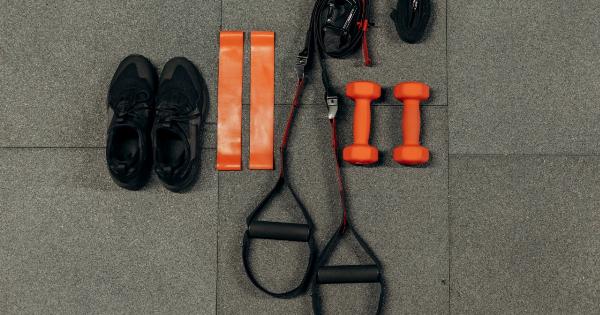Exercise is often associated with youth, vitality, and maintaining a slim figure. However, its benefits extend far beyond aesthetics and are particularly crucial as one enters middle age.
Regular physical activity in the middle years of life can significantly increase longevity and improve overall health and well-being. From reducing the risk of chronic diseases to enhancing mental wellness, exercise is a powerful tool that must not be underestimated.
1. Lower Risk of Chronic Diseases
As individuals reach middle age, the risk of developing chronic diseases such as heart disease, diabetes, and certain types of cancer tends to increase.
However, engaging in regular physical activity can effectively reduce the likelihood of developing these conditions. Exercise helps to improve cardiovascular health, strengthen the immune system, regulate blood sugar levels, and control body weight, thereby lowering the risk of chronic diseases and improving overall longevity.
2. Weight Management and Muscle Health
Maintaining a healthy weight becomes more challenging with age due to changes in metabolism and hormonal fluctuations. However, regular exercise can help prevent weight gain and support weight loss efforts.
Engaging in activities such as cardiovascular exercises, strength training, and aerobic workouts can boost metabolism, preserve muscle mass, and increase calorie expenditure, making it easier to manage weight and prevent obesity-related health issues.
3. Enhanced Bone Density and Joint Health
As individuals age, the risk of developing osteoporosis and experiencing joint problems increases. Engaging in weight-bearing exercises such as walking, jogging, or weightlifting can strengthen bones and promote healthy bone density.
Additionally, regular movement and exercise help lubricate the joints and maintain their flexibility, reducing the risk of joint-related conditions such as arthritis and improving overall mobility.
4. Mental Well-being and Cognitive Function
Middle age often brings increased work and family-related responsibilities, which can lead to higher stress levels and impact mental well-being.
Exercise has been consistently linked to improved mental health by reducing stress, anxiety, and symptoms of depression. Physical activity promotes the release of feel-good hormones, such as endorphins, which can significantly improve mood and enhance overall mental well-being.
Moreover, numerous studies have shown that exercise can also enhance cognitive function and memory, reducing the risk of age-related cognitive decline and conditions such as dementia and Alzheimer’s disease.
5. Improved Sleep Quality
Inadequate sleep or poor sleep quality is a common issue that many people face as they get older. Regular exercise has been proven to help regulate sleep patterns and improve overall sleep quality.
Engaging in physical activity increases the time spent in deep sleep, which is crucial for physical and mental restoration. By incorporating regular exercise into their routine, individuals in middle age can experience more restful nights and wake up feeling refreshed and energized.
6. Regulation of Hormonal Changes
Menopause for women and andropause for men are natural hormonal changes that occur during middle age. These changes can result in various physiological and psychological symptoms.
Exercise can help regulate hormonal imbalances by promoting the release of endorphins and balancing other hormones in the body. This can lead to a reduction in common menopausal symptoms such as hot flashes, mood swings, and sleep disturbances.
For men, regular exercise can also help manage symptoms associated with andropause, such as decreased energy levels and reduced muscle mass.
7. Social Engagement and Connection
Middle age often comes with changes in social dynamics, such as grown children leaving home or increased work-related responsibilities.
Engaging in regular exercise provides an opportunity to socialize and maintain connections with friends, family, and community members. Joining group exercise classes, sports teams, or walking clubs not only promotes physical well-being but also fosters social engagement and a sense of belonging, contributing to overall happiness and life satisfaction.
8. Increased Energy and Vitality
One of the most noticeable benefits of regular exercise in middle age is the increased energy and vitality it brings.
Physical activity boosts energy levels by improving cardiovascular fitness, enhancing blood circulation, and increasing oxygen supply to the muscles and brain. Regular exercise also promotes the release of endorphins, which can elevate mood and provide a natural energy boost, leading to improved productivity and a better quality of life.
9. Longevity and Quality of Life
The combination of all the benefits mentioned above contributes to a longer, healthier life. Engaging in regular exercise in middle age can significantly increase life expectancy and improve the quality of those years.
By reducing the risk of chronic diseases, maintaining a healthy weight, preserving muscle and bone health, enhancing mental well-being, and promoting better sleep, individuals can enjoy a more vibrant and fulfilling life as they age.
10. Finding What Works for You
It is essential to choose physical activities that you enjoy and can easily incorporate into your lifestyle.
Whether it’s walking, swimming, dancing, cycling, gardening, or practicing yoga, finding activities that bring you joy and can be sustained in the long term is key. It’s recommended to aim for at least 150 minutes of moderate aerobic exercise or 75 minutes of vigorous aerobic exercise per week, combined with strength training exercises twice a week for optimal health benefits.































